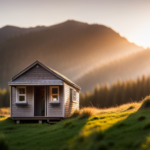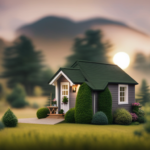Beginners Guides
What Qualifies As A Tiny House?
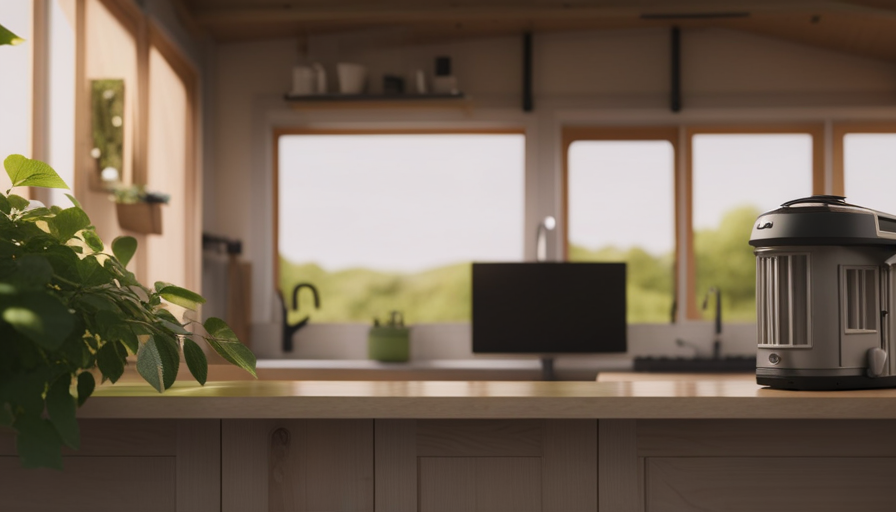
By chance, during a recent walk through my neighborhood, I came across a delightful small house nestled between two larger homes. It was so compact that it made me question: is this considered a tiny house? Driven by curiosity, I set out on a journey to truly understand what defines these small abodes.
So, what qualifies as a tiny house? Size is certainly a defining factor. These pint-sized abodes typically range from 100 to 400 square feet, encouraging a minimalist lifestyle that embraces simplicity and efficiency. But it doesn’t end there. A functional design is crucial, with clever storage solutions and multipurpose furniture maximizing every inch of space. Mobility and portability are also key, allowing owners to take their homes on the road or easily relocate.
Moreover, sustainability and eco-friendliness are often at the core of tiny house construction, utilizing renewable materials and energy-efficient systems. Building codes and regulations vary, but many jurisdictions have specific guidelines for these unique structures. Customization and personalization are highly valued, allowing individuals to create a space that reflects their personality and needs.
Join me on this insightful journey as we explore the many facets of what qualifies as a tiny house, from affordability and cost considerations to the vibrant communities and unique lifestyles they foster. Together, let’s uncover the charm and allure of these small but mighty dwellings and discover the secrets they hold.
Key Takeaways
- Tiny houses are typically 100 to 400 square feet in size and promote a minimalist lifestyle and efficient use of space.
- They are built with sustainability and eco-friendliness in mind, incorporating renewable materials and energy-efficient systems.
- Tiny houses are affordable due to their smaller footprint and reduced utility bills, making them a more cost-effective housing option.
- They offer flexibility in living arrangements, can be easily transported, and can be customized to fit individual needs and preferences.
Size Requirements
To be considered a tiny house, it must meet certain size requirements, such as being no larger than 400 square feet. These size restrictions are essential in defining what qualifies as a tiny house, as they ensure that the dwelling remains compact and efficient.
The concept of tiny houses revolves around functional design, where every square inch is utilized to its fullest potential. By keeping the size limited, it forces homeowners to think creatively about space-saving solutions and clever storage options.
One of the main advantages of tiny houses is their affordability and cost considerations. With a smaller footprint, these homes require less building materials, resulting in lower construction costs. Additionally, the reduced square footage means lower utility bills and maintenance expenses. This affordability factor has made tiny houses an appealing option for those looking to downsize or reduce their carbon footprint.
Moving on to the next section about functional design, it’s important to note that size restrictions play a crucial role in shaping the layout and overall aesthetic of a tiny house. From multi-purpose furniture to innovative storage solutions, every element is carefully selected to maximize functionality and optimize the use of space.
Functional Design
When it comes to functional design, you’ll find that a tiny home is like a well-oiled machine, maximizing every square inch for efficiency and convenience. Here are three key elements of functional design in tiny houses:
-
Multifunctional Furniture: One of the most important aspects of functional design in tiny homes is the use of multifunctional furniture. Every piece of furniture serves multiple purposes, such as a bed that can fold into a sofa or a dining table that can be transformed into a workspace. This not only saves space but also ensures that every item in the house has a specific function.
-
Clever Storage Solutions: Another crucial aspect of functional design is the incorporation of clever storage solutions. In a tiny house, every nook and cranny is utilized efficiently, with hidden compartments, built-in shelves, and overhead storage. This allows for a clutter-free living environment, where everything has its designated place.
-
Affordability Considerations: Functional design in tiny houses also takes affordability into account. By maximizing space and minimizing material usage, builders can keep costs low without compromising on functionality. Additionally, energy-efficient features and sustainable materials are often incorporated to reduce long-term expenses and environmental impact.
With functional design, tiny houses provide homeowners with a thoughtfully designed space that meets their needs while keeping costs and environmental impact in mind. Speaking of efficiency, let’s now delve into the topic of mobility and portability.
Mobility and Portability
Mobility and portability are two key aspects to consider when discussing tiny houses. The ability to move or transport a tiny house is crucial for those who want flexibility and the freedom to change locations.
Additionally, the option for off-grid living is an attractive feature for many tiny house enthusiasts, as it allows for a more self-sufficient and sustainable lifestyle.
Overall, these factors greatly contribute to the appeal and practicality of tiny houses.
Ability to be moved or transported
Although it may seem unlikely, an essential aspect of tiny houses is their ability to be easily transported. This is what sets them apart from traditional homes and makes them a unique housing option.
The ability to be moved or transported is a key feature of tiny houses for several reasons:
-
Size requirements: Tiny houses are designed to be small and compact, typically ranging from 100 to 400 square feet. This makes them easier to transport, as they can fit onto a trailer or be loaded onto a flatbed truck.
-
Flexibility: The ability to move a tiny house allows for flexibility in living arrangements. Whether it’s relocating to a new city or simply changing the scenery, tiny homeowners have the freedom to take their homes with them.
-
Minimalist lifestyle: Tiny houses encourage a minimalist lifestyle, where one only keeps what is necessary. The portability of these homes reinforces this idea, as homeowners must carefully consider what possessions are truly essential and worth bringing along.
-
Adventure and exploration: The ability to transport a tiny house opens up opportunities for adventure and exploration. From road trips to living off-grid in remote locations, tiny homeowners can embrace a more nomadic lifestyle.
The ability to be easily transported is a defining characteristic of tiny houses. It allows for flexibility, promotes a minimalist lifestyle, and enables homeowners to embark on new adventures. Speaking of adventures, let’s now explore the options for off-grid living.
Options for off-grid living
Living off the grid can be like sailing on an endless sea of self-sufficiency and sustainable living. When it comes to tiny houses, there are various options for off-grid living. One of the most important aspects is the use of sustainable building materials. These materials not only reduce the environmental impact but also ensure that the house is energy-efficient and resilient.
From solar panels to rainwater harvesting systems, there are numerous off-grid living options available for tiny house dwellers. These options allow individuals to generate their own electricity, collect and use rainwater, and even compost waste. By incorporating these sustainable practices, tiny house owners can minimize their reliance on traditional utilities and live in harmony with nature.
Moving from off-grid living options to the next section on sustainability and eco-friendliness, it becomes clear that tiny houses are not only a practical choice but also an environmentally conscious one.
Sustainability and Eco-friendliness
When it comes to sustainability and eco-friendliness in tiny houses, there are three key points that stand out: the use of renewable materials, energy-efficient systems, and appliances.
Using renewable materials not only reduces the environmental impact but also promotes the use of resources that can be replenished.
Energy-efficient systems and appliances, on the other hand, help minimize energy consumption and lower the carbon footprint.
By focusing on these aspects, tiny house dwellers can contribute to a more sustainable and eco-friendly way of living.
Use of renewable materials
Despite its small size, a tiny house can still be constructed using a variety of renewable materials, such as bamboo, reclaimed wood, and recycled steel. The use of sustainable materials not only reduces the environmental impact but also adds a unique aesthetic appeal to these compact homes.
Bamboo, for instance, is a fast-growing grass that can be harvested without causing deforestation, making it an excellent choice for structural elements and flooring. Reclaimed wood adds character and warmth to the interior while reducing the need for new timber. Recycled steel, on the other hand, is durable and strong, making it suitable for framing and support.
By incorporating these renewable materials, tiny houses can achieve a harmonious balance between sustainability and functionality. This focus on eco-friendly construction seamlessly transitions into the subsequent section about energy-efficient systems and appliances.
Energy-efficient systems and appliances
When it comes to tiny houses, using renewable materials is just one part of the equation. Another crucial aspect is incorporating energy-efficient systems and appliances.
These energy-saving features not only reduce the environmental impact but also make the tiny house more sustainable and cost-effective in the long run.
Energy-efficient design can include insulation, double-pane windows, and solar panels to harness the power of the sun. Additionally, appliances such as energy-efficient refrigerators and LED lighting help minimize electricity usage.
By focusing on energy efficiency, tiny house owners can significantly reduce their carbon footprint and save on utility costs.
Moving forward, it’s essential to consider how these energy-efficient systems and appliances align with building codes and regulations to ensure a safe and compliant structure.
Building Codes and Regulations
Compliance with local zoning laws and obtaining the necessary permits and certifications are crucial aspects to consider when building a tiny house. Understanding and adhering to local zoning regulations ensures that the tiny house is located in an appropriate area and meets all necessary requirements.
Furthermore, obtaining the proper permits and certifications ensures that the construction process is legal and that the tiny house is safe and up to code. Being knowledgeable about these key points is essential to successfully navigate the building process and ensure compliance with building codes and regulations.
Compliance with local zoning laws
To fully embrace the tiny house lifestyle, you’ll want to make sure your adorable abode complies with local zoning laws. This not only ensures compliance with architectural guidelines but also avoids any potential negative impact on property values.
Here are three important things to consider when it comes to compliance with local zoning laws:
-
Setbacks and Height Restrictions: Many zoning codes have specific requirements for how far your tiny house should be set back from property lines and the maximum height allowed. Understanding these regulations will help you avoid any issues when it comes to constructing or placing your tiny house.
-
Land Use Restrictions: Some areas have restrictions on the types of structures allowed on certain properties or in certain neighborhoods. It’s crucial to research and understand these restrictions to ensure your tiny house is in compliance.
-
Parking and Utilities: Zoning laws often dictate requirements for parking spaces and utility hookups. Make sure you have adequate space for parking and access to necessary utilities.
Compliance with local zoning laws is just the first step. Next, we’ll explore the permits and certifications required for your tiny house.
Permits and certifications required
In order to fully embrace the tiny house lifestyle, it’s important for you to obtain the necessary permits and certifications required for your compact dwelling. This is crucial as it ensures that your tiny house meets all building codes and regulations set by your local jurisdiction.
Obtaining permits and certifications not only guarantees the safety and structural integrity of your tiny house but also ensures compliance with zoning laws and regulations. Building codes and regulations vary from place to place, so it’s essential to research and understand the specific requirements for your area.
By obtaining the necessary permits and certifications, you can have peace of mind knowing that your tiny house is legally compliant and safe to reside in.
Now that we’ve covered the importance of permits and certifications, let’s move on to the exciting topic of amenities and features.
Amenities and Features
Imagine living in a tiny house, where every square inch is thoughtfully designed to maximize space and provide you with all the amenities and features you need for a comfortable and fulfilling life. Despite their small size, tiny houses can be equipped with a surprising array of amenities, ensuring that you don’t have to sacrifice convenience or comfort. From compact kitchens with full-size appliances to luxurious bathrooms with modern fixtures, tiny houses can offer all the essentials.
To give you a glimpse of the possibilities, here is a table showcasing some common amenities and features found in tiny houses:
| Amenities | Features |
|---|---|
| Space-saving | Loft sleeping areas |
| Kitchenette | Composting toilets |
| Multi-purpose | Energy-efficient |
| Storage solutions | Solar panels |
| Compact appliances | Rainwater collection |
| Efficient heating | Smart home technology |
As you can see, tiny houses are not lacking in functionality or comfort. They are designed to be efficient and utilize every inch of space effectively. Furthermore, customization and personalization play a significant role in the design process, allowing you to tailor your tiny house to your specific needs and preferences.
In the next section, we will explore the exciting world of customization and personalization, where you have the opportunity to transform your tiny house into a unique and personalized space that reflects your individual style and taste.
Customization and Personalization
Get ready to unleash your creativity and transform your compact dwelling into a one-of-a-kind haven that perfectly captures your unique style and personality. When it comes to tiny houses, the possibilities for customization are endless. You have the freedom to design and customize every aspect of your tiny home, from the layout and architecture to the colors and materials used.
Here are three exciting customization options to consider for your tiny house:
-
Space-saving solutions: Maximize the functionality of your tiny home by incorporating innovative space-saving solutions. From clever storage ideas like hidden compartments and built-in shelves to multi-purpose furniture that can serve multiple functions, there are countless ways to make the most of your limited space.
-
Personalized design: Infuse your personality into your tiny house by incorporating personalized design elements. Whether it’s a unique wallpaper, a custom-made furniture piece, or artwork that reflects your interests and passions, these personal touches can truly make your tiny house feel like home.
-
Eco-friendly features: Embrace sustainability by incorporating eco-friendly features into your tiny house. This could include solar panels for energy efficiency, composting toilets for water conservation, or reclaimed materials for a more environmentally conscious design.
Customizing your tiny house allows you to create a space that is tailored to your needs and preferences. However, it’s important to consider the affordability and cost considerations that come with these customization options.
Affordability and Cost Considerations
Creating a tiny haven that perfectly captures your unique style and personality can be a financial balancing act, like a tightrope walk over a pit of expenses and budget constraints. Affordability and cost considerations play a crucial role in the world of tiny houses. While the cost of building or buying a tiny house can vary greatly depending on factors such as size, customization, location, and materials used, it is generally more affordable compared to traditional homes.
To give you a better understanding of the cost considerations involved, here is a table that breaks down some common expenses when it comes to tiny houses:
| Expense | Cost Consideration |
|---|---|
| Construction | Materials, labor, permits |
| Utilities | Water, electricity, heating |
| Land | Purchase or rental |
| Maintenance | Repairs, upgrades, cleaning |
| Lifestyle | Travel, parking, community fees |
By considering these cost factors, you can make informed decisions and prioritize your spending to ensure your tiny house remains affordable and within your budget. While there may be initial investments and ongoing expenses, the overall cost of living in a tiny house can be significantly lower than in a traditional home.
As we delve into the next section about ‘community and lifestyle,’ it becomes clear that the affordability and cost considerations of a tiny house are closely intertwined with the overall experience and sense of belonging that comes with living in a tight-knit community.
Community and Lifestyle
Embrace a vibrant sense of community and a unique lifestyle that perfectly complements your individuality and desires. Living in a tiny house offers more than just a smaller living space; it opens up a whole new world of community engagement and social impact.
Tiny house communities are known for their close-knit relationships and shared values, where neighbors become friends and support is readily available. Whether it’s participating in community events, joining in on neighborhood projects, or simply enjoying a cup of coffee with a fellow tiny house enthusiast, the sense of belonging is unparalleled.
Being part of a tiny house community also allows for a greater social impact. By choosing to live in a tiny house, you’re making a conscious decision to reduce your ecological footprint and live a more sustainable lifestyle. This commitment to environmental responsibility resonates within the community, inspiring others to adopt similar practices and creating a positive ripple effect. Together, tiny house communities contribute to a greener future and serve as a model for sustainable living.
Transitioning into the next section about ‘longevity and resale value,’ it’s important to note that the sense of community and social impact associated with tiny house living can also have long-term benefits.
Longevity and Resale Value
When considering the longevity and resale value of a tiny house, two key points come to mind: durability and quality of construction, and the potential for future resale or repurposing.
A well-built tiny house that’s constructed with high-quality materials can withstand the test of time and maintain its value over the years.
Additionally, the versatility of a tiny house allows for various future uses, whether it’s selling it to someone else or repurposing it for different needs.
Durability and quality of construction
To ensure the durability and quality of construction in your tiny house, you should prioritize using sturdy materials and reinforcing key structural elements. It is important to strike a balance between durability and cost when selecting the materials for your tiny house. While it may be tempting to cut corners and opt for cheaper alternatives, investing in higher-quality materials will pay off in the long run.
Additionally, consider construction techniques that not only enhance durability but also minimize the environmental impact of your tiny house. For example, using sustainable materials and incorporating energy-efficient features can contribute to a more eco-friendly and durable home. By focusing on these aspects, you can create a tiny house built to withstand the test of time while minimizing its impact on the environment.
This attention to detail will also enhance its potential for future resale or repurposing, allowing you to make the most of your investment.
Potential for future resale or repurposing
After discussing the durability and quality of construction, it’s important to consider the potential for future resale or repurposing of a tiny house. This aspect plays a crucial role in determining its overall value and marketability.
Unlike traditional homes, tiny houses offer a unique advantage when it comes to adaptability. Due to their compact size and flexible design, these homes have the potential for a wide range of future uses. Whether it’s converting the tiny house into an office space, a guest house, or even a rental property, the options are endless.
This adaptability not only adds to the potential marketability of the tiny house but also provides an opportunity for creative and sustainable adaptive reuse. By repurposing these homes, we can minimize waste and contribute to a more environmentally friendly future.
Frequently Asked Questions
Are tiny houses legally considered as permanent housing or temporary structures?
Tiny houses are legally considered as permanent housing, subject to property taxes and building codes. While some may argue they are temporary structures due to their size, they meet the requirements for permanent housing.
How do tiny houses handle waste management and sewage systems?
Tiny houses typically utilize composting toilets and greywater systems for waste management and sewage. Composting toilets convert human waste into compost, while greywater systems recycle water from sinks and showers for irrigation.
Can tiny houses be built on any type of terrain or do they require specific foundations?
Tiny houses can be built on various terrains, but specific foundations may be required to meet building codes and minimize environmental impact. These foundations ensure stability and proper waste management systems, addressing the concerns raised in the previous question.
Are there any restrictions on the location or zoning regulations for parking or living in a tiny house?
Location restrictions and zoning regulations vary by jurisdiction, but they can impact where you can park or live in a tiny house. It’s important to research and comply with local laws to ensure you’re in compliance.
Do tiny houses have access to basic utilities such as water, electricity, and internet connection?
Yes, tiny houses typically have access to basic utilities such as water, electricity, and internet connection. This is important for ensuring that they are livable and can meet the needs of their residents.
Conclusion
So, after exploring the various factors that qualify a house as ‘tiny,’ it becomes clear that size alone isn’t the sole determinant. A functional design that maximizes space, mobility, and portability for those who wish to live a nomadic lifestyle is important. Sustainability and eco-friendliness are also crucial. Adherence to building codes and regulations is necessary. Customization and personalization options should be available. Affordability is a key factor. Lastly, a sense of community and lifestyle play important roles. It’s safe to say that when it comes to tiny houses, it’s not just about thinking outside the box but rather living inside it.
Hi, I’m Emma. I’m the Editor in Chief of Tiny House 43, a blog all about tiny houses. While tree houses are often associated with childhood, they can be the perfect adult retreat. They offer a cozy space to relax and unwind, surrounded by nature. And since they’re typically built on stilts or raised platforms, they offer stunning views that traditional homes simply can’t match. If you’re looking for a unique and romantic getaway, a tree house tiny house might just be the perfect option.
Beginners Guides
How Do I Get Rid of Tiny White Bugs on My House Plants

- Health risks associated with tiny white bugs on house plants.
- Effective methods to prevent infestations of tiny white bugs on house plants
I am facing a small white insect issue with my indoor plants, and it is really frustrating me! These annoying bugs seem to be multiplying quickly, causing damage to my precious plants.
But fear not, my fellow plant enthusiasts, for I’ve done my research and found some effective solutions to eliminate these unwelcome guests.
In this article, I’ll share with you the knowledge and remedies I’ve discovered, so you too can reclaim your bug-free, thriving indoor garden.
Key Takeaways
- Aphids, mealybugs, and whiteflies are common types of tiny white bugs found on house plants.
- Lack of proper plant care, overwatering, and bringing infested plants indoors can lead to bug infestations.
- Homemade insecticides using water and dish soap or neem oil can suffocate and disrupt the feeding patterns of pests.
- Regular cleaning and inspection routines help detect and address pest issues early on.
Identifying the Tiny White Bugs on Your House Plants
I can easily spot the tiny white bugs on my house plants by carefully examining the leaves and stems. The most common species of these pests found on house plants are aphids, mealybugs, and whiteflies.
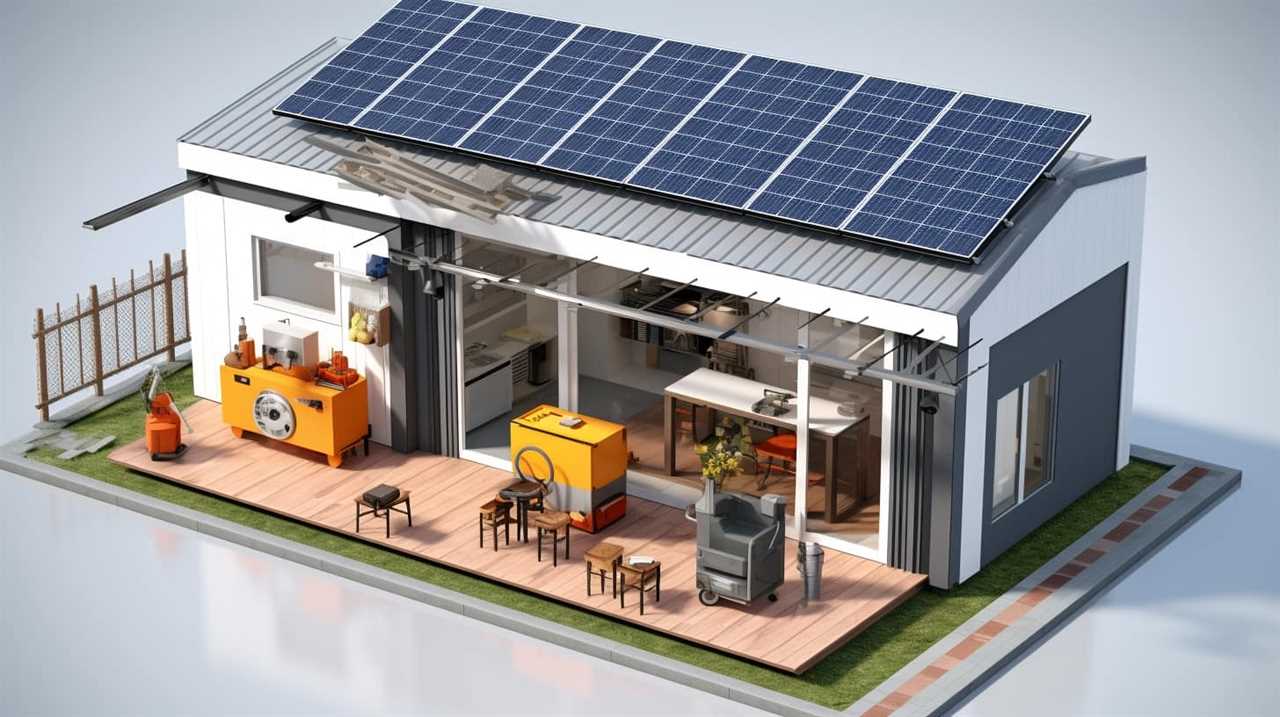
Aphids are small, pear-shaped insects that cluster on new leaves and buds.
Mealybugs are covered in a white, waxy substance and can be found on the undersides of leaves and in leaf axils.
Whiteflies, as the name suggests, are tiny white insects that fly around when disturbed.
An infestation of these tiny white bugs can cause significant damage to your house plants. Signs of infestation include yellowing leaves, stunted growth, distorted foliage, and a sticky residue called honeydew on the leaves. Furthermore, these pests can transmit plant diseases, weaken the plant’s immune system, and attract other pests.
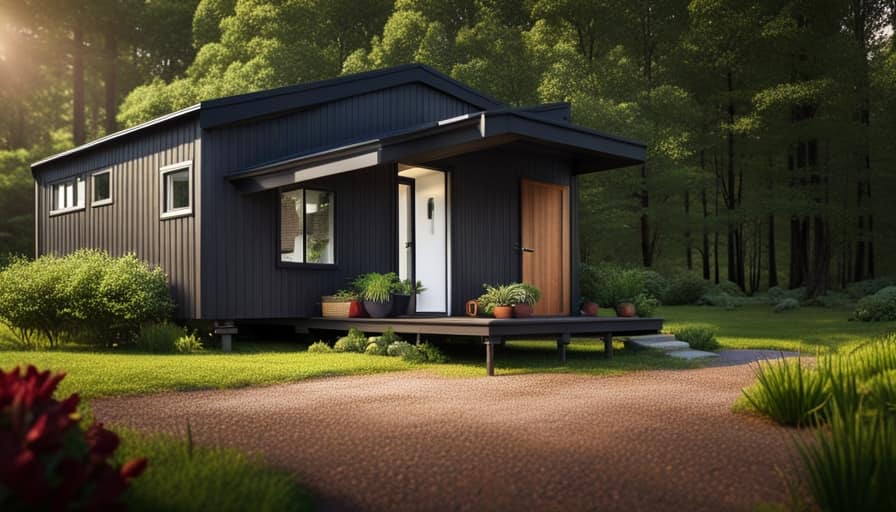
Understanding the causes of infestation is crucial in effectively getting rid of these tiny white bugs on your house plants.
Understanding the Causes of Infestation
Understanding the causes of infestation is essential in effectively eliminating these tiny white bugs on my house plants. Here are a few key factors to consider:
- Lack of proper plant care: Neglecting to provide adequate water, sunlight, and nutrients can weaken plants, making them more susceptible to bug infestations.
- Overwatering: Excessive moisture can create a favorable environment for pests like aphids and mealybugs.
- Bringing infested plants indoors: Introducing plants from outside without proper inspection can bring unwanted bugs into your home.
Recognizing the signs of bug damage is crucial for preventing infestation. Look out for yellowing, wilting leaves, sticky residue on leaves and stems, and tiny white bugs crawling on the plant’s surface.
Now that we understand the causes of infestation, let’s explore natural remedies to eliminate these pesky bugs.
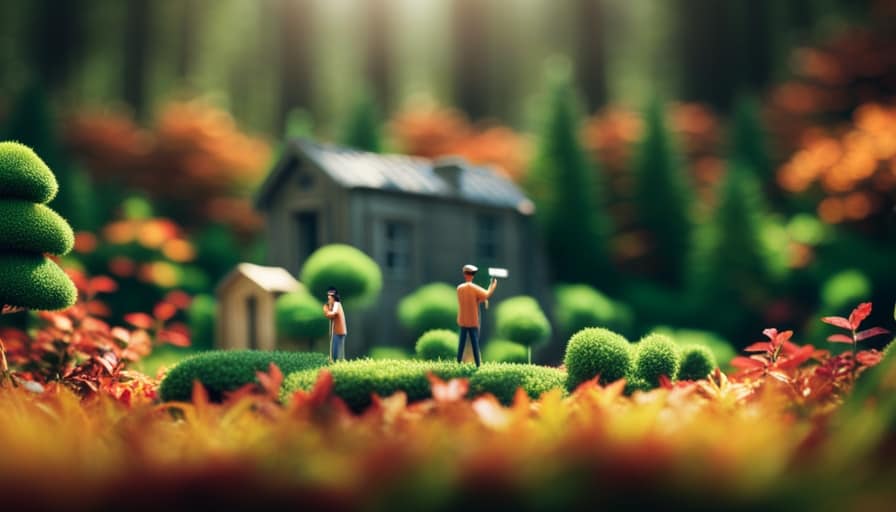
Natural Remedies to Eliminate the Bugs
To effectively get rid of these tiny white bugs on my house plants, I’ll need to rely on natural remedies that can eliminate them without harming the plants.
One effective option is to create homemade insecticides using ingredients readily available in your kitchen. You can mix a solution of water and dish soap, or water and neem oil, and spray it directly on the affected plants. These solutions work by suffocating the pests and disrupting their feeding patterns.
Another natural approach is to introduce insect-repelling plants into your garden. Plants like lavender, mint, and marigold emit fragrances that repel insects, keeping them away from your precious plants.
Chemical Solutions for a Lasting Bug-Free Environment
One effective chemical solution for achieving a bug-free environment is using a professional-grade insecticide spray. These sprays are specifically formulated to target and eliminate pests, including tiny white bugs on house plants. When using a professional-grade insecticide spray, it’s important to follow the instructions provided by the manufacturer to ensure safe and effective use.
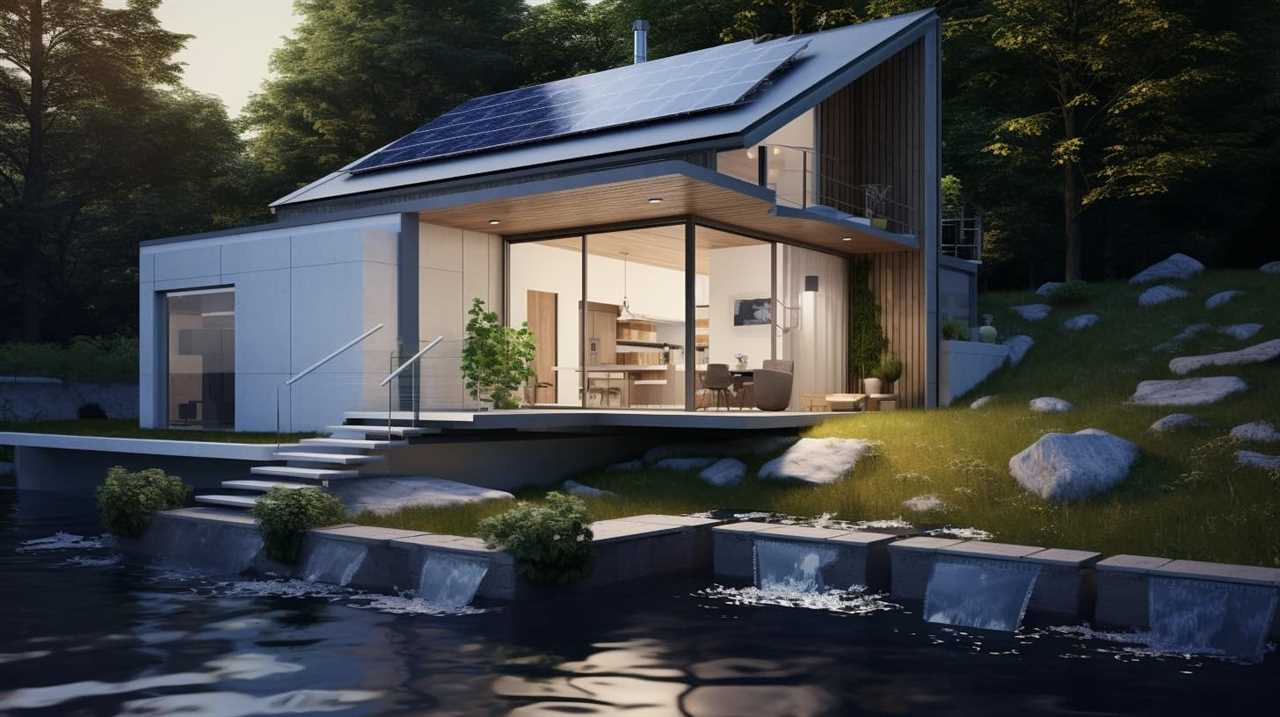
Additionally, consider these non-toxic alternatives to chemical solutions for pest control:
-
Neem oil: Derived from the neem tree, neem oil is a natural insecticide that can be effective against a wide range of pests. It works by disrupting the insect’s life cycle and repelling them from plants.
-
Insecticidal soap: Made from potassium salts of fatty acids, insecticidal soap works by suffocating pests on contact. It’s safe to use on most plants and can be an effective solution against white bugs.
-
Diatomaceous earth: This powdery substance is made from fossilized remains of diatoms and acts as a desiccant, drying out and killing insects.
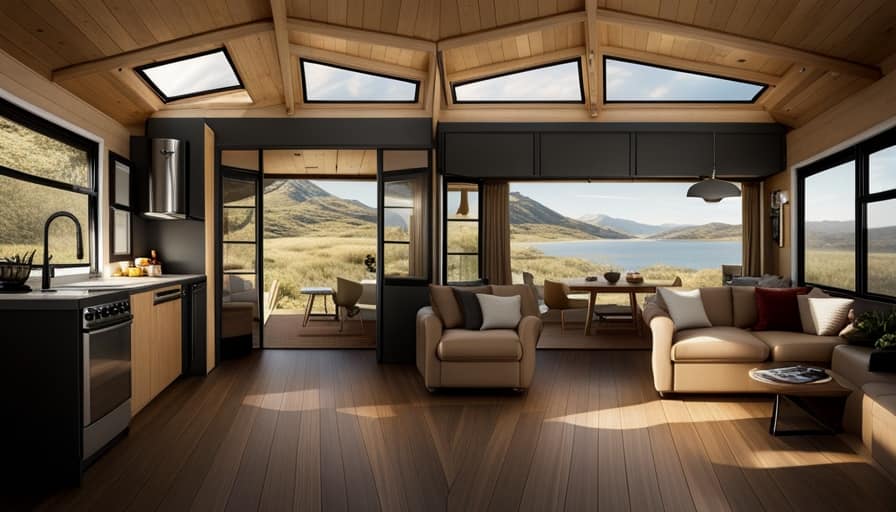
When using any chemical solution or non-toxic alternative, it’s essential to monitor the plants closely and repeat the treatment as necessary to maintain a bug-free environment. Professional pest control services can also provide expert guidance and assistance in achieving long-lasting results.
Preventing Future Infestations and Maintaining Healthy House Plants
To effectively prevent future infestations and maintain healthy house plants, I will implement a regular cleaning and inspection routine. This will help ensure that any signs of pests or diseases are detected early on and addressed promptly. Regularly cleaning the leaves and stems of my plants with a mild soap and water solution will help remove any dust or debris that can attract pests. Additionally, I will inspect the plants for any signs of infestation, such as white bugs or sticky residue on the leaves. To further enhance plant hygiene, I will also consider using beneficial insects, such as ladybugs or lacewings, which feed on common plant pests like aphids. By incorporating these practices into my routine, I can maintain healthy house plants and prevent future infestations.
| Regular Cleaning | Inspection Routine | Using Beneficial Insects |
| Remove dust and debris | Check for signs of infestation | Introduce ladybugs or lacewings to control pests |
| Promotes plant hygiene | Detect and address issues early | Natural pest control method |
| Prevents pest attraction | Maintain healthy house plants | Encourages ecosystem balance |
Frequently Asked Questions
Can These Tiny White Bugs Harm Humans?
Yes, tiny white bugs on house plants can harm humans. They can cause skin irritations and allergic reactions. It’s important to take steps to prevent infestations, such as regularly inspecting and cleaning your plants.
How Long Does It Take for Natural Remedies to Eliminate the Bugs Completely?
To completely eliminate the tiny white bugs using natural remedies, it typically takes a few weeks of consistent application. However, the effectiveness of these remedies can vary. It’s important to avoid common mistakes like under-applying or using incorrect remedies.
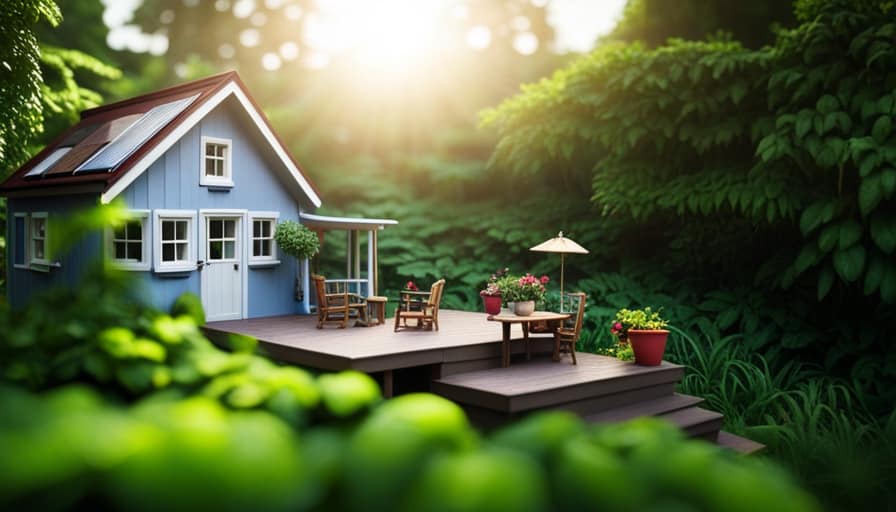
Are There Any Specific Types of House Plants That Are More Prone to Infestations?
Certain house plants, like lavender and marigolds, have natural repellent properties that can help prevent infestations. It’s important to choose plants that are known to repel bugs and to regularly inspect and clean your plants to avoid any potential infestations.
Can These Bugs Spread From One House Plant to Another?
Oh, the joy of tiny white bugs on house plants! Yes, these pests can spread from one plant to another. To control them, use insecticides and watch out for signs of infestation like sticky residue or wilting leaves.
How Often Should I Check My House Plants for Signs of Infestation?
I check my house plants for signs of infestation regularly to ensure their health. Common signs include tiny white bugs and yellowing leaves. Preventative measures like proper watering and cleaning can help keep plants bug-free.
Conclusion
In conclusion, taking care of our house plants goes beyond watering and sunlight. Identifying and eliminating tiny white bugs is a crucial part of maintaining a healthy environment for our plants.
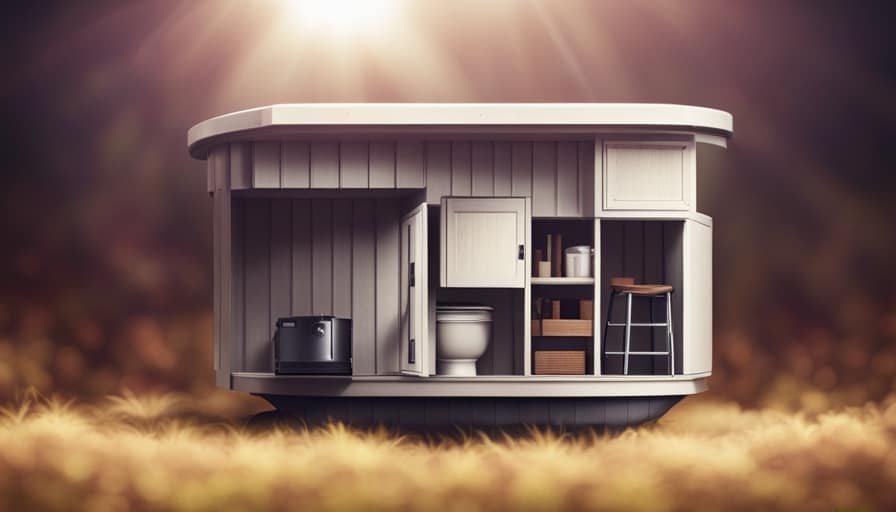
By understanding the causes of infestation and using natural or chemical remedies, we can ensure a bug-free environment. Remember, prevention is key, so regularly inspect your plants and take necessary measures to keep them thriving.
Happy gardening!
I’m Theodore, and I love tiny houses. In fact, I’m the author of Tiny House 43, a book about tiny houses that are also tree houses. I think they’re magical places where imaginations can run wild and adventures are just waiting to happen.
While tree houses are often associated with childhood, they can be the perfect adult retreat. They offer a cozy space to relax and unwind, surrounded by nature. And since they’re typically built on stilts or raised platforms, they offer stunning views that traditional homes simply can’t match.
If you’re looking for a unique and romantic getaway, a tree house tiny house might just be the perfect option.
Beginners Guides
How Do I Get Rid of Tiny Moths in My House

I have experienced the frustration of dealing with tiny moths flying around my food in the kitchen. But do not worry, I have a solution for you.
In this article, I’ll show you how to banish those pesky moths from your house for good. We’ll dive into identifying different moth species, understanding what attracts them, and simple prevention techniques you can implement.
Plus, I’ll share some natural remedies and professional options as a last resort. Say goodbye to those unwanted guests!
Key Takeaways
- Identifying the specific moth species is crucial for implementing targeted control measures.
- Moths are attracted to food sources, fabrics, and organic materials, so it’s important to store food in airtight containers and keep the house clean.
- Moths prefer dark, undisturbed areas to lay their eggs, so sealing cracks and openings in walls, windows, and doors can help prevent infestation.
- If natural remedies and DIY methods fail, it is advisable to seek professional pest control services for thorough inspection and tailored treatment plans.
Identifying the Culprits: What Type of Moth Is Invading Your Home
I can’t figure out what kind of moth is infesting my home. It’s frustrating not knowing the exact species, as different moths have different behaviors and habits. Identifying the culprits is crucial in order to effectively address the problem.
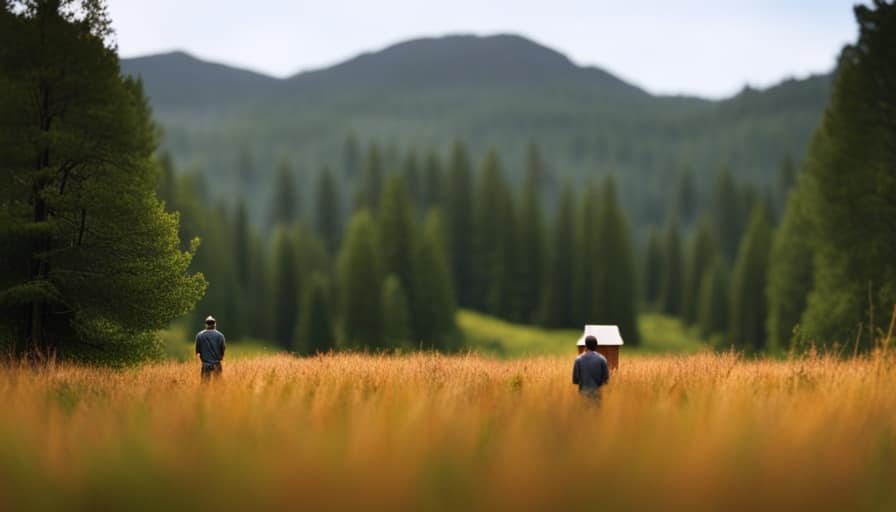
There are several common moth species that are known to invade homes, such as the Indian mealmoth, clothes moth, and pantry moth. Each species has distinct characteristics that can help with identification. Understanding their behavior is also important as it can give insights into their lifecycle and potential sources of infestation.
Moths are attracted to food sources, fabrics, and other organic materials. They can lay eggs in stored grains, textiles, or even pet food. By understanding the specific species and their behavior, it becomes easier to implement targeted control measures and prevent further infestations.
Understanding the Infestation: Why Are Moths Attracted to Your House
To effectively address the infestation, it’s essential to understand why moths are attracted to your house. Here are four reasons why moths may be flocking to your home:
-
Food sources: Moths are attracted to food, especially grains, cereals, and dried fruits. They can easily find their way into your pantry and feast on these items.
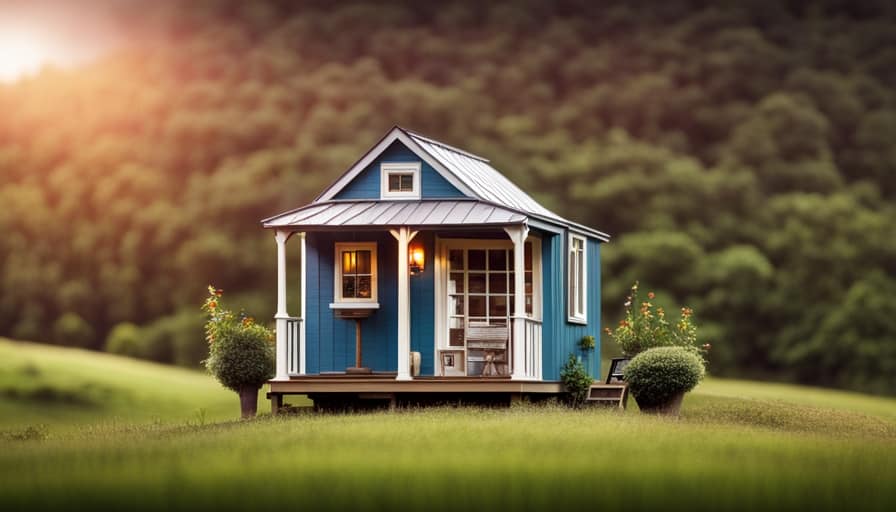
-
Moisture and humidity: Moths thrive in damp environments, making your house an ideal breeding ground if there are areas with high humidity or water leaks.
-
Suitable habitat: Moths are drawn to dark, undisturbed areas where they can lay their eggs undisturbed. This includes closets, attics, and basements.
-
Outdoor attraction: Moths can be attracted to your house from the outside, especially if you have outdoor lights that are left on at night.
Understanding moth behavior and their attraction to your house is crucial in preventing further infestation. By addressing these factors, you can take steps to keep moths at bay and protect your home.

Here are some moth prevention tips:
- Store food in airtight containers.
- Keep your house clean and free of crumbs or spills.
- Fix any leaks or moisture issues promptly.
- Use moth repellents or traps in vulnerable areas.
Prevention Is Key: Simple Steps to Keep Moths From Entering Your Home
Prevention is essential, so I’ll share some simple steps to keep moths from entering your home. By taking a proactive approach, you can create an inhospitable environment for moths and minimize the risk of infestations. One effective method is to use moth repellent products, such as sachets or sprays, in areas where moths are commonly found. These repellents contain chemicals that deter moths from entering your home. Additionally, it is crucial to seal any cracks or openings in your walls, windows, and doors. Moths can easily slip through these tiny gaps, so using caulk or weatherstripping can help keep them out. Regularly vacuuming and cleaning your home can also eliminate moth eggs or larvae that may be hiding in carpets or corners. By implementing these preventive measures, you can ensure a moth-free home environment.
| Steps to Keep Moths Away | |
|---|---|
| Use moth repellent products | Seal cracks and openings |
| Regularly vacuum and clean |
Natural Remedies: Non-Toxic Solutions to Get Rid of Moths
One effective way to get rid of moths naturally is by using a combination of vinegar and water to create a non-toxic moth spray. Here are some natural remedies you can try:
-
Vinegar and water spray: Mix equal parts vinegar and water in a spray bottle. Spray this solution on areas where moths are present, such as closets, drawers, and pantry shelves. The strong odor of vinegar repels moths and prevents them from laying eggs.
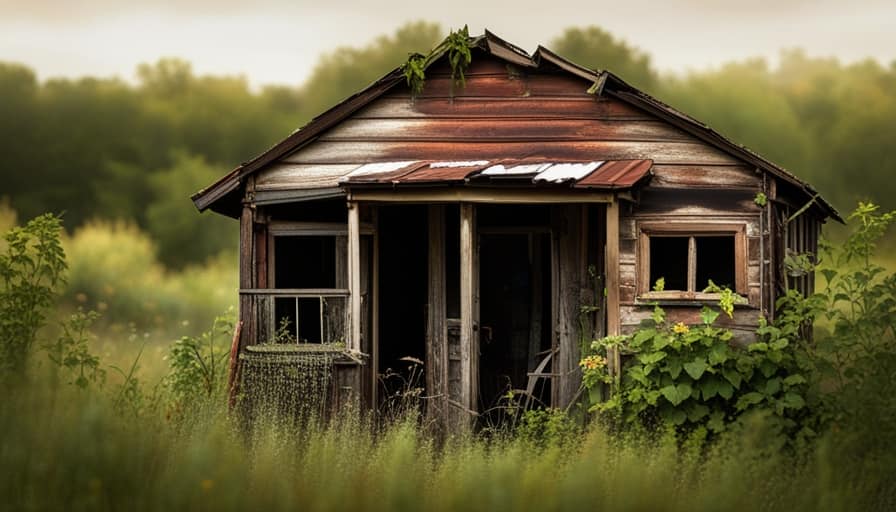
-
Cedar chips: Moths dislike the smell of cedar, so placing cedar chips in your closets and drawers can help deter them. You can also use cedar oil or cedar sachets for the same effect.
-
Homemade traps: Create simple moth traps by placing a mixture of vinegar, sugar, and dish soap in a bowl. The sweet scent attracts moths, and the dish soap traps them when they try to land on the mixture.
-
Lavender sachets: Moths are repelled by the fragrance of lavender. Place dried lavender in small sachets and tuck them in your clothing drawers or hang them in your closets.
These natural repellents and homemade traps can help you get rid of moths without using toxic chemicals. However, if these methods fail to eliminate the infestation, it may be time to consider professional pest control options.
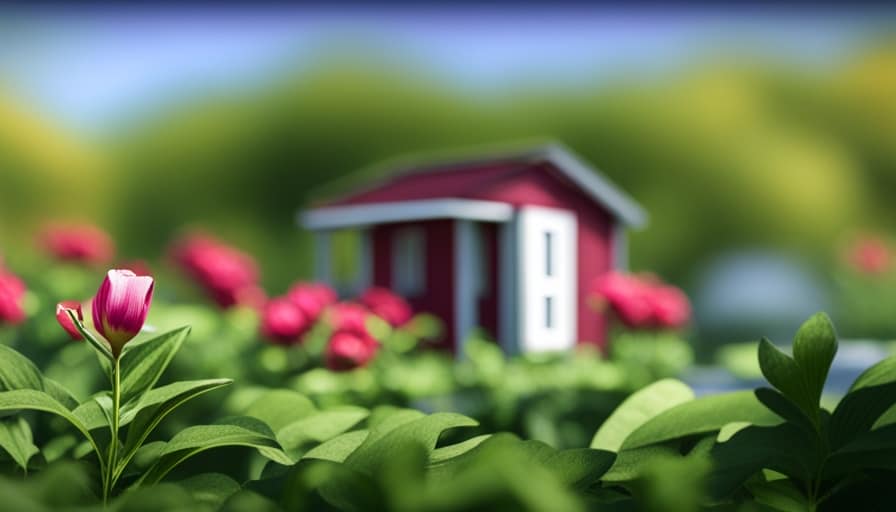
Last Resort: When All Else Fails, Professional Pest Control Options
If I’ve exhausted all other options, I’ll contact a professional pest control service to eliminate the moth infestation in my house. While natural remedies and DIY methods can be effective for small infestations, sometimes the problem persists or worsens despite our best efforts.
This is when it’s crucial to call in the experts. Professional pest control services have the knowledge, experience, and resources to effectively eradicate moth infestations. They’ll conduct a thorough inspection of your home to identify the source of the infestation and develop a tailored treatment plan.
The benefits of hiring professionals include their expertise in identifying different moth species, their access to specialized equipment and pesticides, and their ability to ensure the complete eradication of the infestation.
When all else fails, it’s best to rely on the expertise of professional pest control services to rid your home of those persistent moths.

Frequently Asked Questions
Can Moths Cause Any Damage to My House or Belongings?
Moths can cause damage to fabrics, carpets, and stored food. It’s important to address a moth infestation promptly. Using natural moth repellents, like lavender or cedar, can help deter them from your house and protect your belongings.
Are All Types of Moths Attracted to Homes, or Are There Specific Species That Are More Common?
In the world of moths, certain species have a penchant for our cozy homes. Understanding the types commonly found indoors can help us prevent the dreaded infestations from taking hold in the first place.
How Long Does It Usually Take to Get Rid of a Moth Infestation Using Natural Remedies?
Using natural remedies to get rid of a moth infestation can be effective, but the time it takes varies depending on the severity. Common signs of an infestation include sightings of adult moths and larvae, as well as damaged fabrics or food products.
Can Moths Carry Diseases or Pose a Health Risk to Humans?
Moths can transmit diseases to humans, so it’s important to take precautions. Individuals with allergies or asthma may experience respiratory issues due to moth infestations in homes.

Are There Any Specific Plants or Herbs That Repel Moths and Can Be Used as Natural Remedies?
Using natural moth repellents, such as specific plants and herbs, offers several benefits over chemical alternatives. Creating a moth repelling garden with lavender, rosemary, and mint can effectively deter moths from your house.
Conclusion
In conclusion, it’s essential to address the presence of these minuscule pests in your home promptly. By identifying the specific type of moth invading your space and understanding their attraction, you can take preventive measures to keep them at bay.
Utilizing natural remedies and seeking professional pest control services as a last resort will ensure a moth-free environment without compromising your household’s well-being.
Stay vigilant and employ these effective methods to bid farewell to these unwelcome visitors.
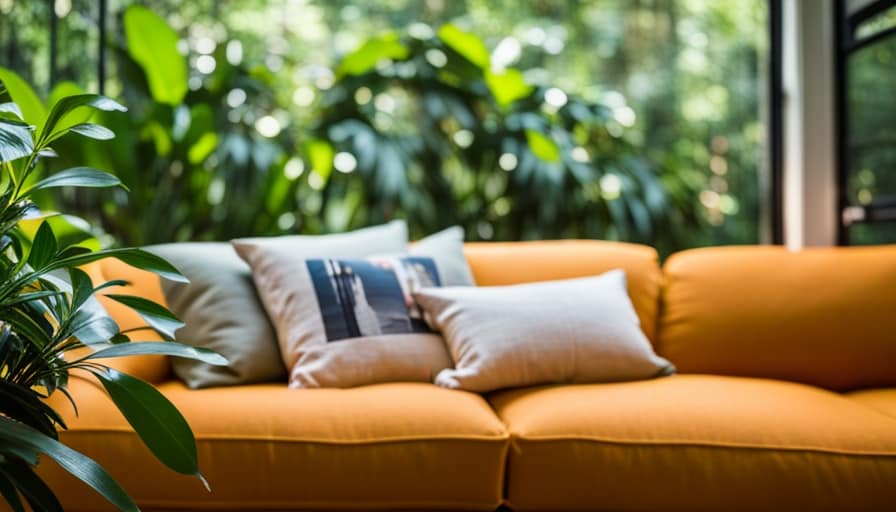
I’m Theodore, and I love tiny houses. In fact, I’m the author of Tiny House 43, a book about tiny houses that are also tree houses. I think they’re magical places where imaginations can run wild and adventures are just waiting to happen.
While tree houses are often associated with childhood, they can be the perfect adult retreat. They offer a cozy space to relax and unwind, surrounded by nature. And since they’re typically built on stilts or raised platforms, they offer stunning views that traditional homes simply can’t match.
If you’re looking for a unique and romantic getaway, a tree house tiny house might just be the perfect option.
Beginners Guides
How Difficult Is It to Build a Tiny House in Colorado Springs

I understand your concerns about building a tiny house in Colorado Springs. However, I can assure you that with the proper knowledge and guidance, it is completely achievable.
In this article, I’ll walk you through the zoning regulations, permitting process, finding suitable land, and navigating building codes. We’ll also discuss securing financing, budgeting, and dealing with utilities.
So, if you’re ready to embark on this rewarding journey, let’s dive in and make your tiny house dreams a reality.
Key Takeaways
- Zoning regulations and building permits are required for constructing a tiny house in Colorado Springs.
- Finding suitable land that complies with zoning regulations is important for placing a tiny house.
- Familiarizing oneself with local building codes and regulations, and following safety guidelines is necessary.
- Researching various financing options and presenting a detailed budget can increase the chances of securing financing for building a tiny house.
Zoning Regulations and Permitting Process
I’ll need to research the zoning regulations and permitting process before starting to build my tiny house in Colorado Springs. Understanding these regulations is crucial as they dictate where and how I can construct my tiny house.
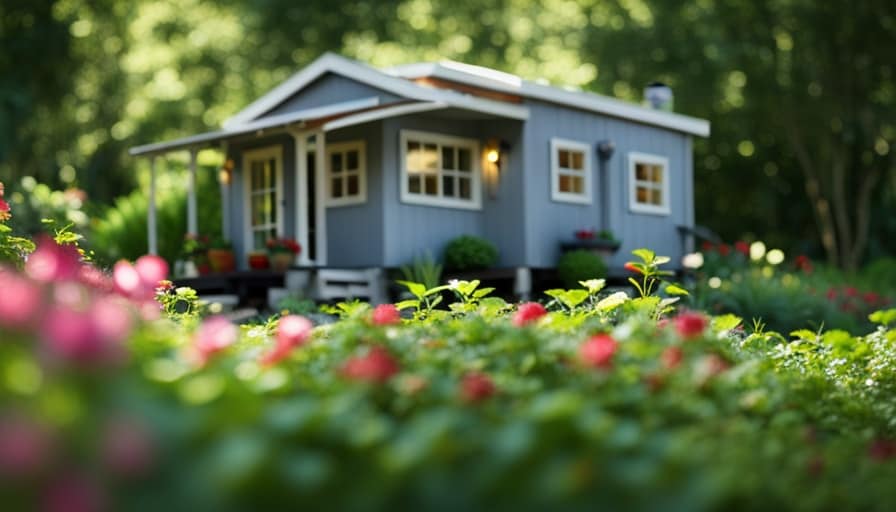
One key aspect to consider is the impact of tiny houses on property values. While some argue that they can decrease property values, others believe that they can actually increase them by adding diversity and uniqueness to the community.
Additionally, one of the challenges I may face is finding legal parking for my tiny house in urban areas. Many cities have restrictions on where tiny houses can be parked, making it essential to find suitable parking options that comply with local regulations.
With these factors in mind, I can now move on to finding suitable land for my tiny house.
Finding Suitable Land for Your Tiny House
After researching the zoning regulations and permitting process, it’s now time to start finding suitable land for my tiny house in Colorado Springs.
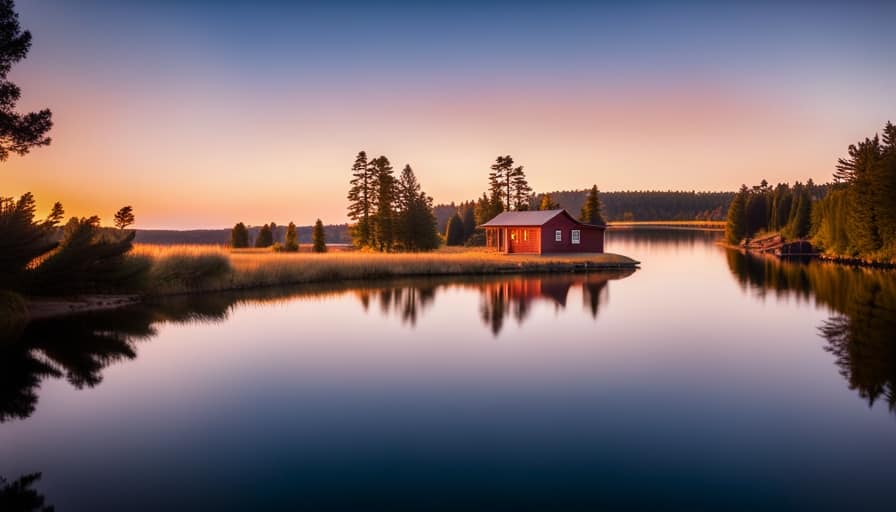
When it comes to finding land for a tiny house, there are a few important factors to consider. One of the major challenges is land availability constraints. Due to the increasing popularity of tiny houses, finding land that allows for their construction can be difficult. It’s important to do thorough research and explore different options, such as contacting local real estate agents or checking online platforms that specialize in tiny house-friendly land.
Additionally, environmental impact considerations are crucial. It’s important to choose a location that minimizes the impact on the surrounding environment and aligns with sustainable practices.
Taking these factors into account will ensure that I find a suitable piece of land for my tiny house in Colorado Springs.
Navigating Building Codes and Inspections
When it comes to navigating building codes and inspections for my tiny house in Colorado Springs, I’ll need to familiarize myself with the local regulations and ensure compliance throughout the construction process. Understanding local regulations is crucial to avoid any legal issues and ensure that my tiny house meets all the necessary requirements.
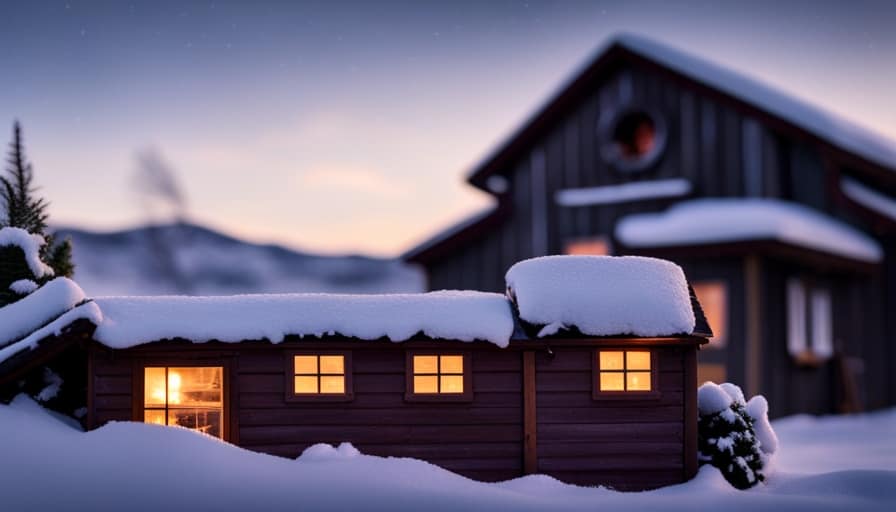
This includes obtaining proper permits, adhering to zoning laws, and following safety guidelines. To ensure a smooth process, I may consider hiring a professional builder who’s well-versed in local building codes and has experience with tiny house construction. Their expertise and knowledge will help me navigate the intricacies of the regulations and ensure that my tiny house is built according to the highest standards.
By understanding the local regulations and working with a professional builder, I can confidently proceed with my project while complying with all necessary codes and inspections.
With the building codes and inspections in mind, the next step is to secure financing and budget for my tiny house project.
Securing Financing and Budgeting for Your Project
To successfully secure financing and budget for my tiny house project in Colorado Springs, I frequently need to research various lenders and explore different funding options. Securing loans for a tiny house can be challenging, as it’s a unique type of project and not all lenders may be familiar with it. However, there are lenders who specialize in providing loans specifically for tiny houses.
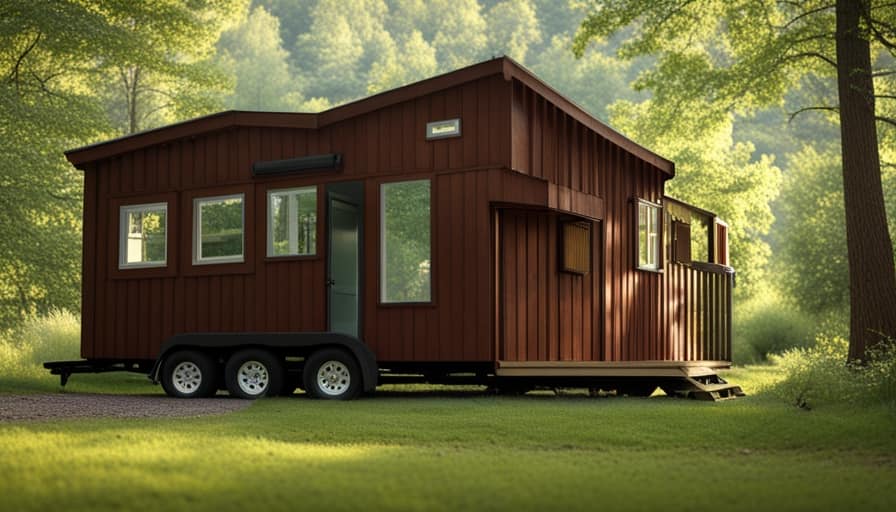
It’s important to gather all the necessary documents and information required by the lenders, such as the cost estimation of the project, including materials, labor, and any additional expenses. By presenting a thorough and well-prepared budget, it increases the chances of securing financing for the project.
Once the financing is secured, it becomes easier to move forward with the next steps of the project, such as dealing with utilities and exploring off-grid options.
Dealing With Utilities and Off-Grid Options
I can explore both traditional utility options and off-grid alternatives when dealing with electricity, water, and sewage in my tiny house in Colorado Springs.
When it comes to off-grid power, there are several options available. Solar panels are a popular choice, harnessing the energy of the sun to generate electricity. Wind turbines can also be used to generate power, particularly in areas with consistent wind patterns. Additionally, hydroelectric power can be harnessed if there’s a suitable water source nearby.
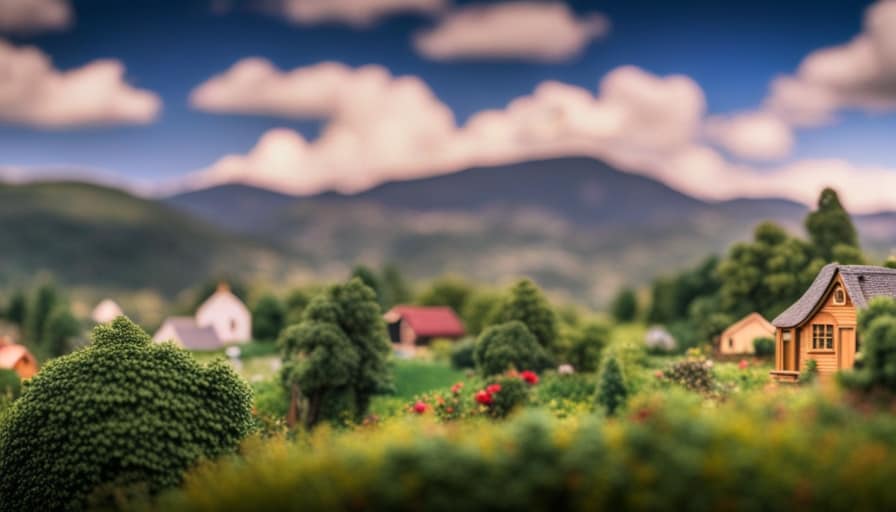
As for water sources, rainwater collection systems can be installed to capture and store rainwater for household use. Digging a well is another option, although it may require permits and additional expenses.
Lastly, composting toilets can be used to manage sewage in an off-grid tiny house, eliminating the need for traditional plumbing systems.
Frequently Asked Questions
What Are the Advantages of Building a Tiny House in Colorado Springs Compared to Other Cities in Colorado?
Building a tiny house in Colorado Springs has many advantages compared to other cities in Colorado. The city has a thriving tiny house community, supportive regulations, and an abundance of natural beauty to enjoy.
Are There Any Specific Design Requirements for Tiny Houses in Colorado Springs?
There are specific design requirements for tiny houses in Colorado Springs, including building regulations that must be followed. It is important to be knowledgeable about these requirements to ensure a successful and compliant build.

How Long Does the Zoning and Permitting Process Usually Take in Colorado Springs?
The zoning and permitting process in Colorado Springs can be a challenge. It takes time to navigate through the requirements and obtain the necessary approvals. However, with proper guidance and patience, it is possible to build a tiny house in Colorado Springs.
Are There Any Restrictions on Living in a Tiny House on Wheels in Colorado Springs?
Living in a tiny house on wheels in Colorado Springs comes with restrictions. Tiny house parking options are limited, and building codes for tiny houses must be followed. It can be challenging, but not impossible.
Can I Rent Out My Tiny House as an Airbnb in Colorado Springs?
Renting out a tiny house as an Airbnb in Colorado Springs is possible, but there are regulations to follow. It’s important to familiarize yourself with local zoning laws and obtain any necessary permits before listing your tiny house as a rental property.
Conclusion
Building a tiny house in Colorado Springs may be challenging due to zoning regulations, finding suitable land, navigating building codes, securing financing, and dealing with utilities.
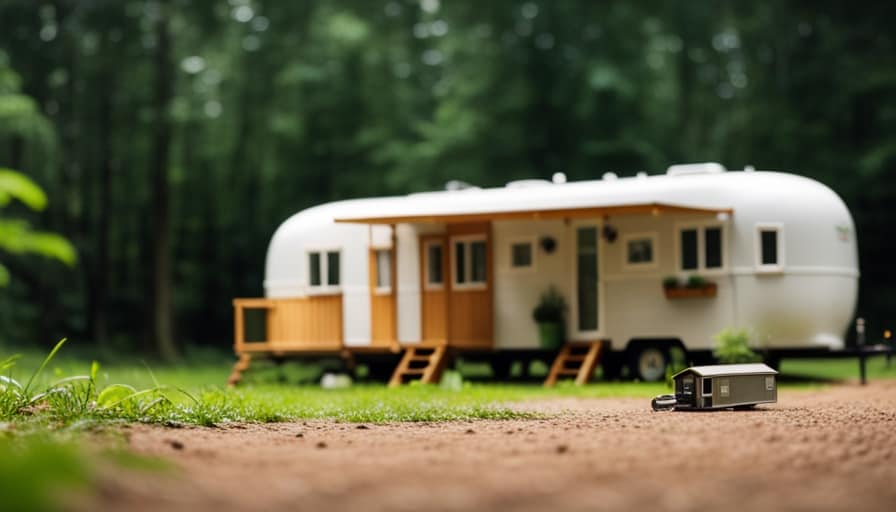
However, with determination and thorough research, it’s possible to overcome these obstacles.
For example, Sarah, a Colorado Springs resident, successfully built her own off-grid tiny house by carefully selecting land outside city limits, obtaining the necessary permits, and utilizing solar power.
Her experience demonstrates that with proper planning and knowledge, building a tiny house in Colorado Springs can be a rewarding and sustainable endeavor.
I’m Theodore, and I love tiny houses. In fact, I’m the author of Tiny House 43, a book about tiny houses that are also tree houses. I think they’re magical places where imaginations can run wild and adventures are just waiting to happen.
While tree houses are often associated with childhood, they can be the perfect adult retreat. They offer a cozy space to relax and unwind, surrounded by nature. And since they’re typically built on stilts or raised platforms, they offer stunning views that traditional homes simply can’t match.
If you’re looking for a unique and romantic getaway, a tree house tiny house might just be the perfect option.
-

 Beginners Guides2 weeks ago
Beginners Guides2 weeks agoHow To Buy A Tesla Tiny House
-

 Energy Efficiency2 months ago
Energy Efficiency2 months agoBest Tiny Homes For Cold Climates
-

 Beginners Guides1 week ago
Beginners Guides1 week agoTiny House Nation Where Are They Now Stephanie
-

 Tiny House Resources (e.g., legalities, cost, insurance, FAQs)2 months ago
Tiny House Resources (e.g., legalities, cost, insurance, FAQs)2 months agoDo Tiny Homes Need Planning Permission?
-

 Beginners Guides3 weeks ago
Beginners Guides3 weeks agoFrom The Show Tiny House Nation How Many Keep Their Tiny House?
-

 Beginners Guides2 months ago
Beginners Guides2 months agoUsing a Climbing Net For Treehouse Construction
-

 Beginners Guides2 months ago
Beginners Guides2 months agoHow to Build a Treehouse Without Drilling Into the Tree
-

 Beginners Guides3 weeks ago
Beginners Guides3 weeks agoTiny House Nation Who Pays For The Houses





